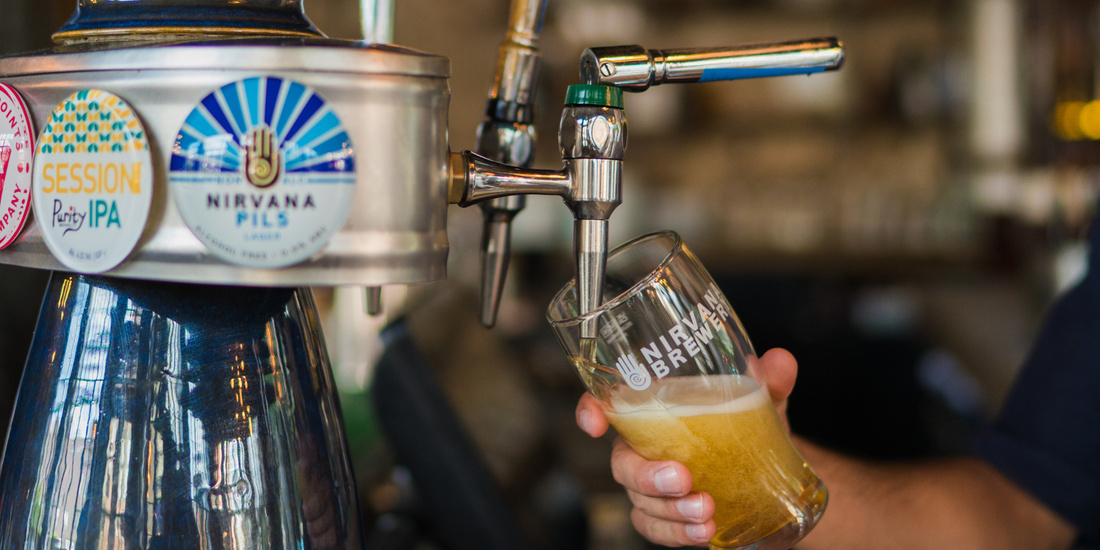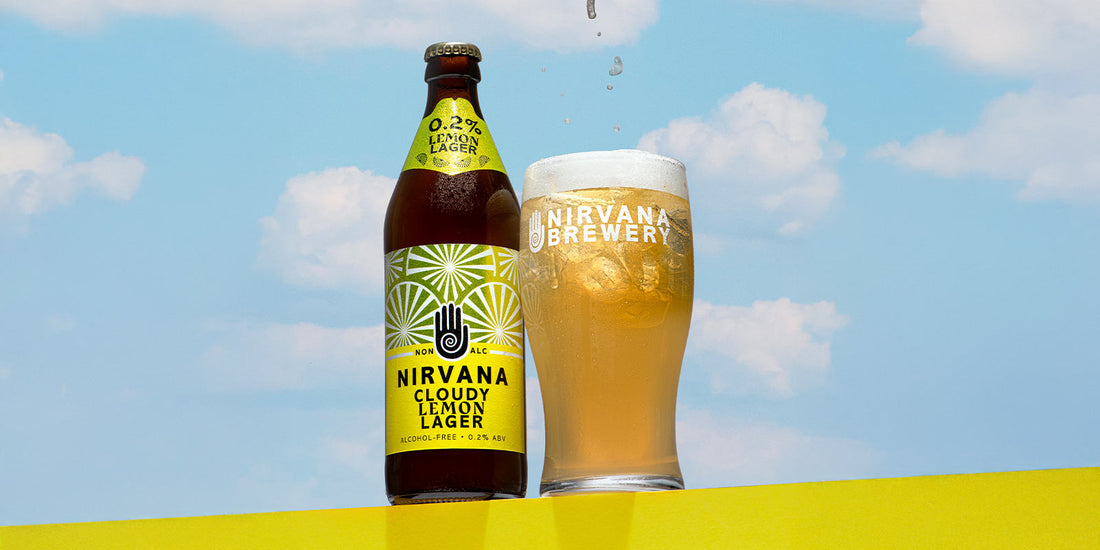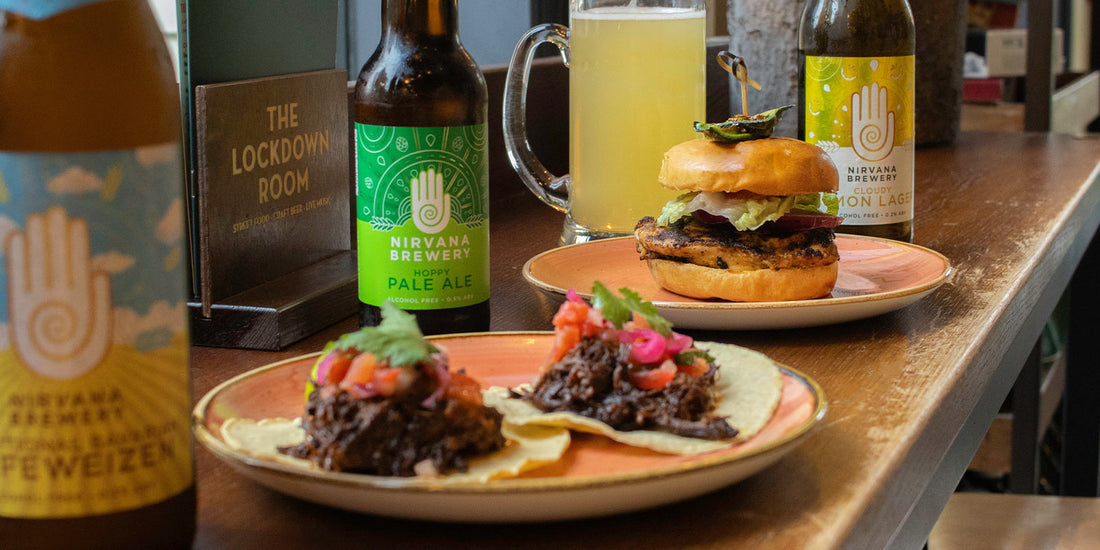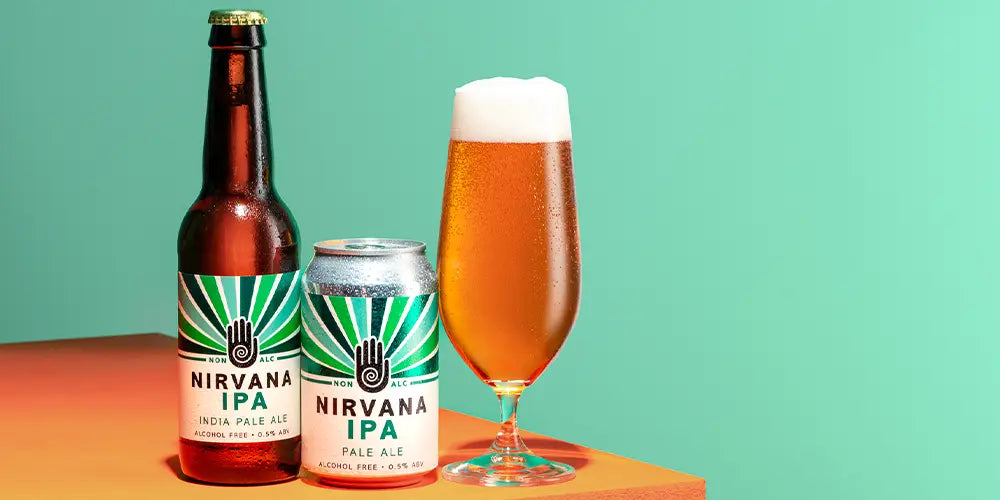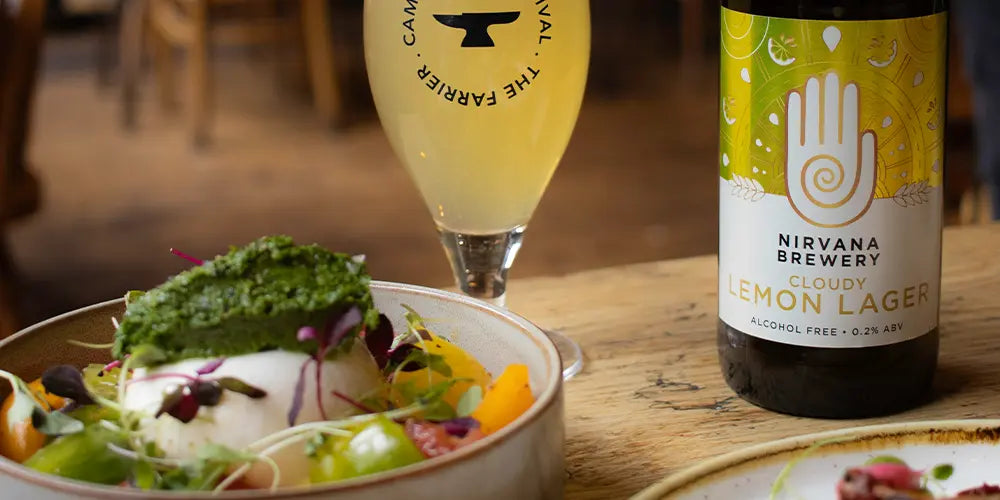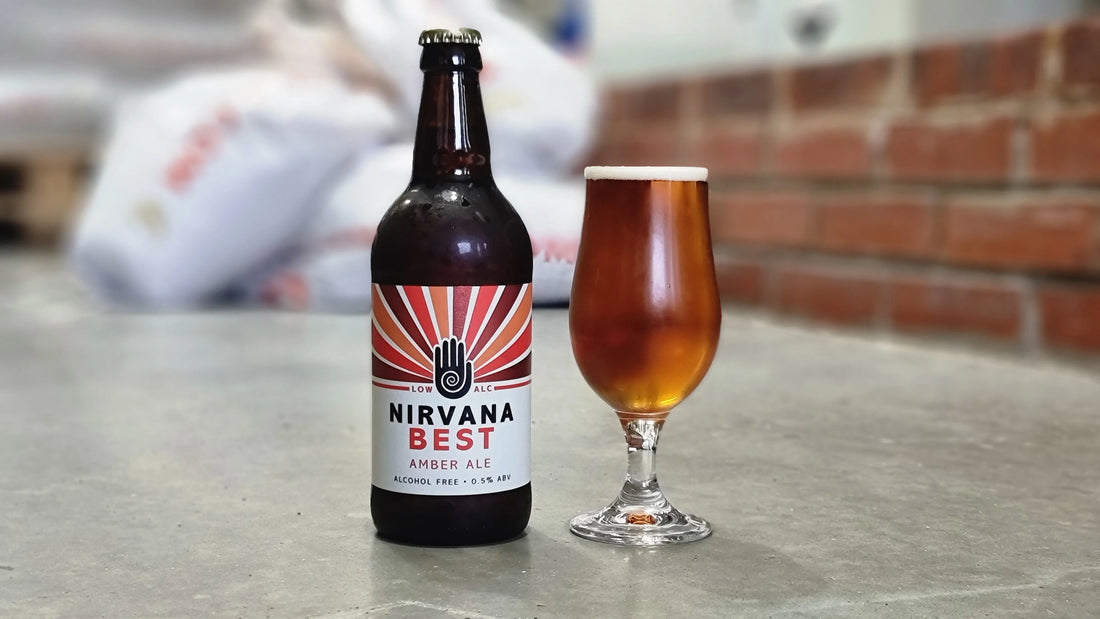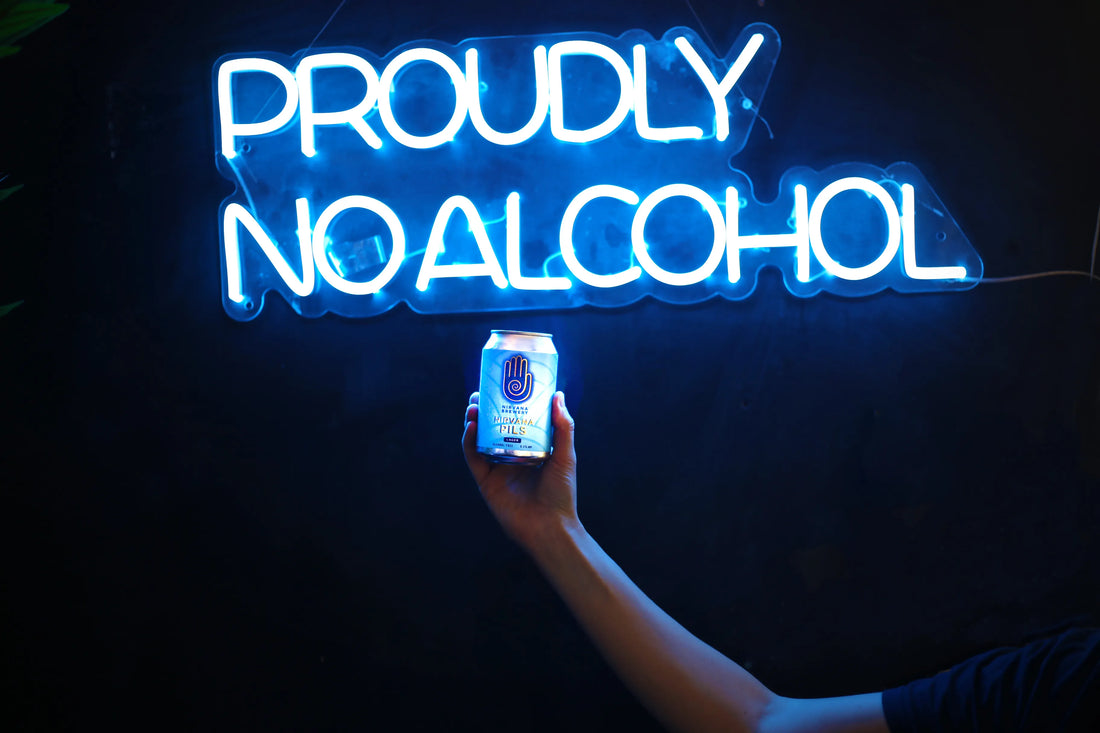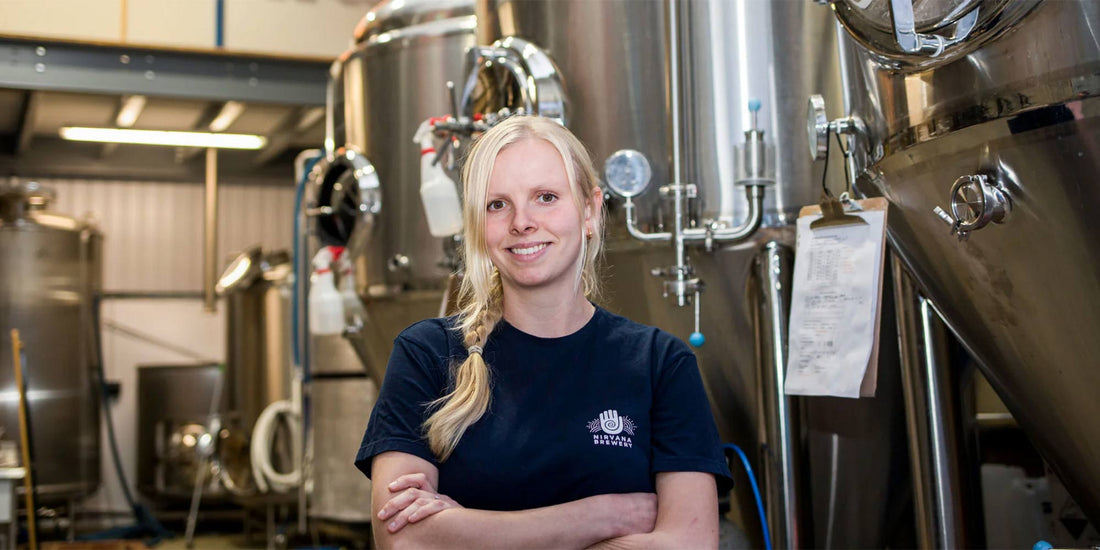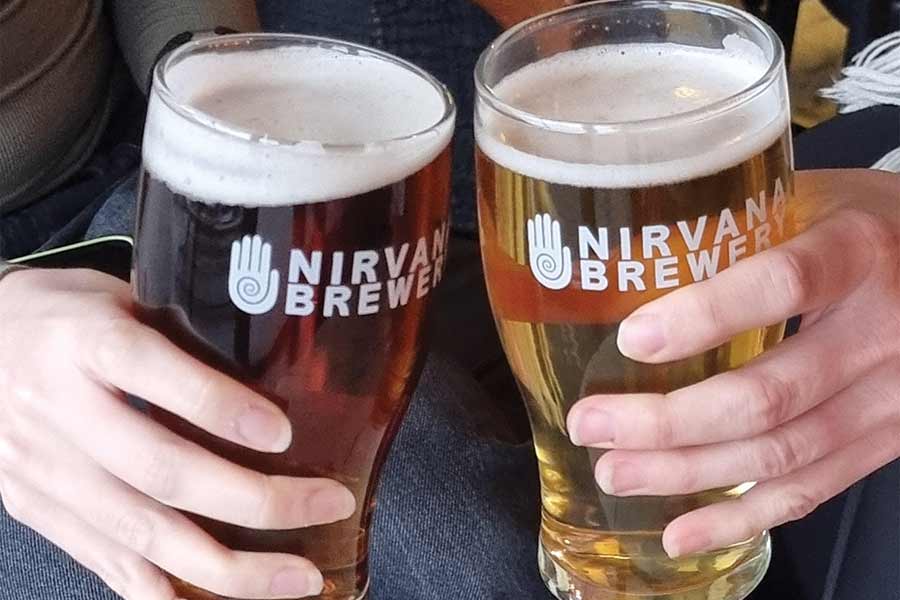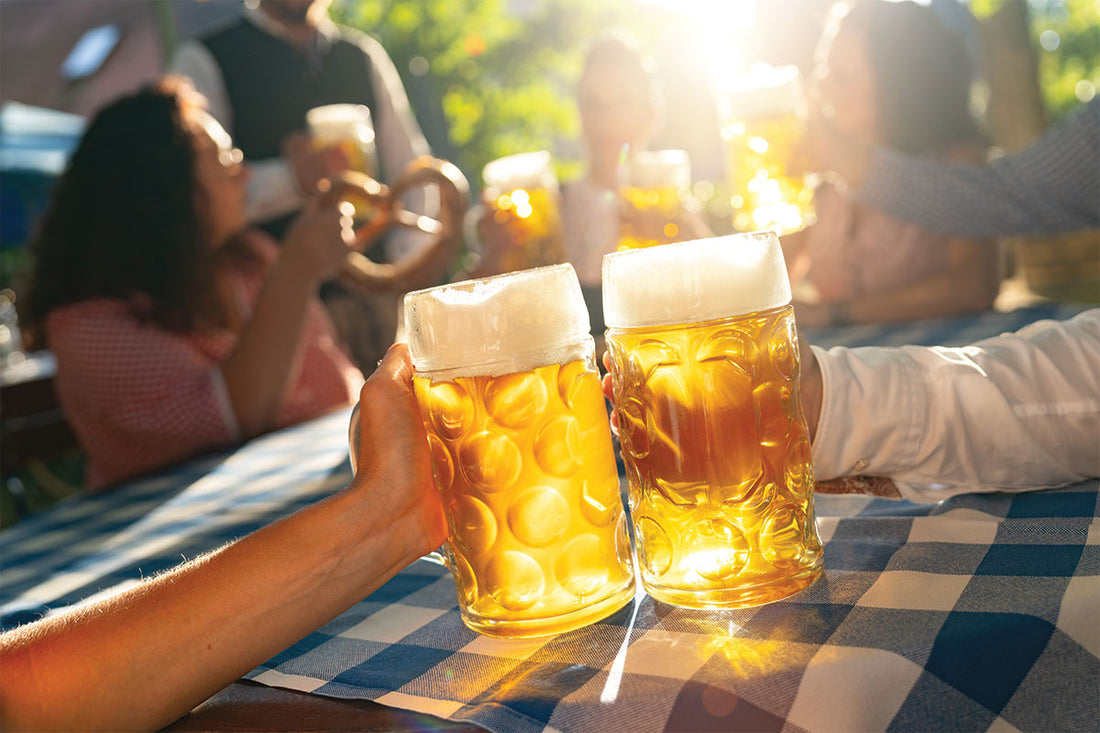Blog
The Best Alcohol Free Beers for Active Lifestyles
Staying active is about more than just movement. It’s about clarity, focus and recovery. Early starts, training sessions and weekend adventures don’t always mix well with late nights and hangovers.
The Modern Guide to Alcohol Free Living
It’s time to balance taste and mindful enjoyment We’ve all seen that there’s a mindful revolution happening in pubs, living rooms and social circles across the UK. People are drinking differently, not because they have to but because they want to. This is the era of mindful drinking, a movement that’s less about saying “no” to alcohol and more about saying “yes” to living fully with clarity, confidence and balance. A wise person once said to me, “drinking in the evening to have fun only takes the enjoyment out of the next day.” At the heart of this change is the alcohol free lifestyle, a choice that’s attracting athletes, creatives, professionals and adventurers who want the buzz of connection without the hangover that follows. As the UK’s first dedicated no-and-low brewery, Nirvana Brewery has been leading the charge with one clear belief: you can taste everything and miss nothing. What Does It Mean to Live Alcohol Free Today? For many, living alcohol free used to mean giving something up. Now it’s about gaining more; more focus, more energy, more mornings that start with clarity instead of regret. The alcohol-free lifestyle is not about restriction but intention. People are looking for ways to socialise, unwind and celebrate without dulling their senses. It’s about being present, feeling grounded and choosing products that match that mindset. In practice, this doesn’t always mean complete abstinence. Many follow what’s called the 80/20 lifestyle, choosing alcohol-free options most of the time but keeping space for a glass of wine or a pint when it truly fits the moment. This flexible, balanced approach mirrors modern wellness trends that focus on sustainability rather than extremes. The Rise of Mindful Drinking The term mindful drinking is often linked to meditation or self-help culture but its roots are simpler. It’s about paying attention to how, when and why you drink and making choices that support the life you actually want. Across the UK, clubs and events dedicated to mindful drinking are drawing in people from every age and background. They’re driven by curiosity and connection, not guilt or pressure. It’s about enjoying the ritual and flavour of beer without compromising your mental or physical wellbeing. For some, that means cutting back to feel sharper at work or in training. For others, it’s about sleep, energy and emotional balance. For everyone, it’s about feeling in control. As this mindset grows, alcohol-free beer or low alcohol alternatives have become a cornerstone of the movement, offering an experience that’s familiar, social and deeply satisfying. A More Active Lifestyle Active people have long known that what you put in your body shapes how you perform, think and recover. Whether you’re training for a marathon, climbing at your local wall or simply chasing that post hike satisfaction, recovery and clarity matter. Alcohol-free alternatives deliver the same reward and ritual as their traditional counterpart without the trade-offs. No dehydration. No foggy mornings. No empty calories sabotaging your goals. A growing number of activity groups are choosing alcohol-free beers as a way to unwind after sessions, a nod to relaxation without undoing their hard work. For those living intentionally, it’s the perfect fit: craft taste and a clear head side by side. Nirvana’s beers are brewed with this balance in mind. From the crisp Bavarian Helles Lager to Chocolate Milk Stout, every bottle or can reflects a belief in quality and craft because going alcohol free should never mean settling for less. The Taste Evolution Let’s be honest, some alcohol free beer has a reputation problem. It can be off-putting, flavourless or simply an afterthought on the bar menu. We’ve changed that! We’ve managed to transform the category through innovation and patience, refining recipes until the taste rivals any full-strength pint. It’s not about imitation, it’s about evolution. Modern alcohol free brewing techniques allow for full fermentation, natural flavour development and balanced aroma, with alcohol carefully removed or controlled at the right stage. The result is a drink that tastes real because it is real, crafted, complex and satisfying. Consumers now have a choice between bland alternatives and authentic craft experiences, and they’re voting with their taste buds. Beyond the Drink: A Mindful Culture The alcohol free lifestyle is more than a trend. It’s becoming part of a cultural shift towards mindfulness, wellness and purpose.. People want connection without compromise. This movement isn’t about preaching sobriety. It’s about normalising choice and recognising that the best nights out don’t need to end in regret and that clarity can be as enjoyable as chaos. In that landscape, brands like Nirvana lead with authenticity. Every brew reflects not just craft expertise but a philosophy, good beer should always taste good, whatever your choice. Social Life Reimagined There’s a misconception that choosing an alcohol free lifestyle means missing out socially. The truth is the opposite. When you remove alcohol’s haze, you find the moments are more real, the conversations deeper, the memories sharper. Bars, restaurants and events across the UK are embracing this shift. Menus now include alcohol free options that match their premium counterparts. Alcohol free festivals, pop-ups and brewery tours are booming. People are proud to raise a glass of something that fits their lifestyle. Whether you’re celebrating after a climb, winding down after a run or meeting friends after work, alcohol free beer keeps you part of the moment without losing tomorrow. Tips for Starting Your Own Mindful Drinking Journey If you’re curious about what a more mindful relationship with alcohol could look like, start small. Here are a few simple ways to ease into an alcohol-free lifestyle without pressure: Experiment, don’t restrict. Try alcohol free beer at times when you’d usually reach for a standard one. Notice how it feels and tastes. Be intentional. Ask yourself what you want from your drink, relaxation, social connection or flavour experience and choose accordingly. Explore quality options. Modern alcohol free beers like Nirvana’s range offer the same satisfaction as craft beers without compromise. Connect with others. Join events, groups or online communities around mindful drinking. It’s easier and more enjoyable when shared. Celebrate progress. Whether you’re cutting back, moderating or going completely alcohol free, every step towards balance counts. A New Standard in Enjoyment The shift towards mindful drinking isn’t about losing tradition, it’s about redefining it. Beer has always been about community, craftsmanship and celebration. Those things haven’t changed. What’s changed is how we choose to enjoy them. By creating alcohol free beers that celebrate flavour and quality, Nirvana Brewery is proving that mindful choices can still be deeply satisfying. This is beer for people who want to stay sharp, connected and inspired, people who want to live life on their terms. So next time you raise a glass, do it with intention. Choose balance. Choose clarity. Choose beer that lets you taste everything and miss nothing.
Cloudy Lemon Lager: The Drink of the Summer?
From back garden BBQs to festival fields and after-work picnics, lemon-infused lagers are making serious waves in the alcohol-free world — and Nirvana’s own Cloudy Lemon Lager is leading the charge.
BBQ Pairings: The Best Brew for Your Meal!
We’ve paired some of Nirvana Brewery’s best-loved brews with our favourite BBQ dishes to create matches made in alcohol free heaven. Ready to fire things up?
Low Calorie Beer – Why No and Low Beers Have The Lowest Calories in The Market
If you’re watching your calories but still enjoy a cold pint, you’re not alone. Our health and wellbeing are at the forefront of the majority of our minds, but so is socialising. Enjoying a beer at the pub with friends shouldn’t affect the way you look after your body, which is why there has been an increased search for low calorie beer. With the rise of health-conscious purchases, no and low-alcohol beer has seen an increase in popularity. But what many people are unaware of is the link between low calorie beer and alcohol-free beer. Low and no beers have some of the lowest calories on the market and so are a great option for those watching their waistline. But what actually makes these beers so low in calories? What Is a Low Calorie Beer? In simple terms, a low-calorie beer contains fewer calories than a standard beer, which usually contains about 215 kcal. Low calorie beers are often under 100 kcal per bottle or can. The high calorie count in normal beer comes from two main sources: alcohol and carbohydrates (mostly from residual sugars). This is why the ABV (alcohol by volume) has such a direct impact on a beer’s calorie count: the more alcohol, the more calories. Why ‘No and Low’ Alcohol = Lower Calories Let’s break it down: Alcohol contains approximately 7 calories per gram, nearly as many as in fat (which contains 9). So even if a beer is low in sugar, the alcohol alone can drive up the total calorie count. ‘No and low’ beers are typically defined as being between 0.5–1.2% ABV, with the UK’s current law stipulating that anything under 0.5% is not considered an alcoholic drink. These beers remove the biggest source of calories by removing or reducing the alcohol. Many of these beers are also brewed to a reduced sugar recipe as a way of achieving lower alcohol content, so the total calorie load is trimmed from both ends. Alcohol has calories, it’s not just about beer. Cutting out alcoholic beverages is actually a great way to help regulate your diet and maintain weight loss, not least because lowered inhibitions from alcohol can also disrupt the most steadfast health resolutions! Luckily, the no and low market is on the rise, meaning that there is a vast selection of alcohol-free beverages available, from wines to spirits. You’ll still be able to enjoy your favourite drinks without the alcohol and the calories that come with it! Real-World Examples To put the amount of calories in alcohol-free beer into perspective: A regular pint of 5% lager contains around 215 calories. A standard 330ml bottle of alcohol free beer (0.5% ABV) such as our Bavarian Helles Lager can contain as few as 60–70 calories, or even less. An equivalent pint-sized serve is in the region of 113. Some other craft options, like our Nirvana IPA contain as few as 25 calories per 100ml, or 82 Kcal per can. Who’s Drinking Low-Calorie, Low-Alcohol Beer? It’s not just designated drivers and Dry January loyalists. Fitness-conscious drinkers, calorie counters, and those simply looking to moderate their alcohol intake are all turning to these lighter options. The modern brewing techniques applied here at Nirvana Brewery use industry-leading and innovative new yeasts to ensure that alcohol free has just as much flavour as full alcohol beer. So, the only thing you’re missing out on is the hangover the next morning! The Bottom Line If you're counting calories, cutting down on alcohol is one of the quickest wins and switching to no or low-alcohol beer is an easy trade-off. So next time you’re scanning the supermarket shelves, browsing our website 😉 or standing at the bar, remember: the lower the ABV, the lower the calorie count. Cheers to that!
The Benefits Of Alcohol-Free Beer
It's more than just socialising. Alcohol free beer and other non-alcoholic beverages have many other benefits compared to their traditional counterparts that we’d love to share with you! So sit back, relax and allow this blog to take you on a journey of discovery.
What’s the best non-alcoholic beer
We put together this blog post mostly just to brag about all the ways in which our Nirvana Best – and all our other beers mind you – are the best non-alcoholic beers on the market and why you should give them a try if you haven’t already!
Breaking the Stigma: The Art of Brewing Alcohol-Free Beer
A common review we’re faced with is that alcohol-free brews are “not real beer” due to the lack of alcohol. Even though the craftsmanship and techniques involved in our beers are just as complex—and sometimes even more challenging—than traditional beer brewing.
Female-Owned Breweries and the Changing Face of Beer Brewing
This International Women’s Day we wanted to take a moment to celebrate women in the world of Beer. Specifically, Female-Owned Breweries like Nirvana as, when we think about brewing and beer consumption today, the image that often comes to mind is a male-dominated industry. However, this perception is changing, and women are reclaiming their rightful place in the world of brewing.
The Pub Show 2025 - Come visit Nirvana Brewery!
It's that time of year again! The Pub Show 2025 is at London's ExCeL from Monday the 17th to Wednesday the 19th of March and Nirvana is there for all three days!
What is Reinheitsgebot - The Legacy of the German Beer Purity Law
Translating to “purity law” the Reinheitsgebot is a law that dictated the ingredients, selling and brewing process which could be used in the production of German beers. Specifically, that beer can only ever be made using barley, hops and water, and nothing else. Reinheitsgebot is a testament to traditional brewing methods and the pursuit of quality that still resonates with brewers and beer lovers today. Here at Nirvana Brewery the heart of a number of our favourite beers come from Bavarian origins (based in the south east of modern Germany). Specifically our Helles Lager and Hefeweizen, so we thought it only right to put a blog together around what the Reinheitsgebot is and what it means for breweries – or specifically Nirvana Brewery – and the production of Beer. The Birth of the Reinheitsgebot The Reinheitsgebot was officially instituted over 500 years ago in 1516, by the Dukes Wilhelm IV and Ludwig X of Bavaria. However, as early as the 13th century, similar regulations were in place in various German cities. The 1516 law specifically had three aims; protecting drinkers from high prices, banning wheat in beer and ensuring that the only ingredients used in beer were barley, water, and hops. Yeast didn't make the list as its role in fermentation was not yet known but the law was eventually changed to permit malted grains, hops, water and yeast. Wheat beer like our Bavarian Hefeweizen (Directly translating as "yeast wheat") was limited for many years in Bavaria. Prioritising the use of wheat in bread production. The law itself, though coming into place in Bavaria in 1516, was only adopted by Northern Germany in the early 1900’s, wherein the whole of Germany’s beer production lives under this law. The Purpose of the Reinheitsgebot The Reinheitsgebot served both economic and health purposes. Economically, it prevented a clash between bakers and brewers by reserving wheat and rye for bread-making. Ensuring that the prices for these essential grains remained stable. This separation of resources prevented inflated bread prices due to competition. Health-wise, the law served as an early form of consumer protection. By restricting the ingredients in beer, it banned the use of cheaper and potentially harmful substitutes like soot or toxic herbs. Ensuring that the public could trust the quality and safety of their beer. The Modern Impact of the Reinheitsgebot In the present day the Reinheitsgebot is no longer law, due to a 1987 ruling by the European Court of Justice. Nevertheless, its legacy endures. Many German breweries still adhere to its tenets voluntarily, viewing it as a mark of quality, tradition, and purity. One that drinkers can not only see on a variety of German beer labels stating “Brewed according to the Reinheitsgebot" but also taste in the quality of the beer brewed according to this tradition. The Reinheitsgebot has become a part of Germany's brewing identity, contributing to the country's reputation as a producer of some of the world's finest beers. The Lasting Legacy The Reinheitsgebot has stood the test of time, its principles transcending its origins in law to become a symbol of quality and tradition in brewing. While the world of beer has expanded and evolved with new styles and brewing techniques, the core values - purity, quality, and tradition - continue to hold a revered place in the heart of the brewing industry. One that we here at Nirvana take very seriously. You’ll only ever find us using the best quality products and brewing methods for our beers. Quality that you can taste.
The growth of Alcohol-Free Beer
As we near the end of 2024, it’s time to reflect on how the world of Alcohol-free has changed over the past year and its growth in the overall drinks market.


